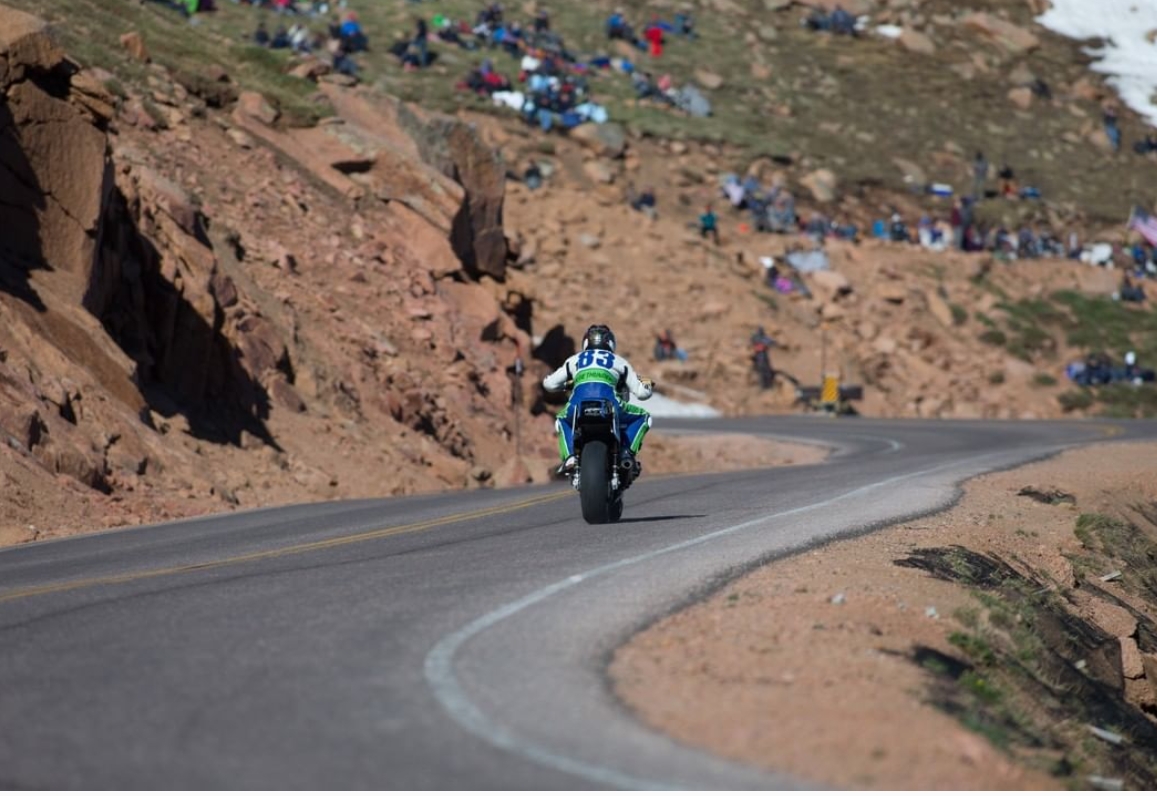As far back as man has been building motors at his day job, he’s also been pushing them to the limits on the weekends. When flat track begins to lose its luster, he takes to the hills to see what man and machine are made of. What more daunting of a place in the Americas to get your heart pounding than Pikes Peak.
A Race To The Clouds
Introducing itself by several titles, the more formal name the race goes by is the Broadmoor Pikes Peak International Hill Climb or PPIHC for short. At cocktail parties, the race is more casually known as The Race to the Clouds. This now internationally recognized event grew from humble roots back in 1916, where entrepreneur Spencer Penrose organized the first race to the top. It’s now annually held on the last Sunday in June and attracts a motley crew of racers running this Colorado peak in anything from unrestricted Ultimate vehicles, to ATV’s, and motorcycles with sidecars.
The Route
The road itself is a toll road that winds through the lush forests just outside of Colorado Springs, about 100-miles from Denver. The landscape is so breathtaking that it draws just under 6-million tourists a year just for the view. The second most visited mountain in the world after Japans famed, Mount Fuji. The route is a quick 12.42-mile run that kicks off at 9390-feet, then careens around 156 life-risking turns, until reaching (hopefully) the summit at 14,115-feet. In it’s 100+ years of racing history the title of champ has changed hands many times. Currently, the four-wheeled category is held by Sébastien Loeb in a Peugeot 208 T16 PP, set in 2013 with a time of 8:13.878. The motorcycle division was broken in 2017 by Chris Fillmore on his 2017 KTM Super Duke with a time of 9:49.625. With the first race having a recorded finish time of 20:55.6.
Change Is The Only Constant
Nothing remains the same forever, and even the historic PPIHC has succumbed to modern times. In 1998 a lawsuit was brought about by the largest environmental organization in the US, alleging that a 13-mile portion of the Pikes Peak highway that was left unpaved was in violation of the Clean Water Act. This was filed against The City of Colorado Springs and the National Forest Service. In the end, it was resolved that the road must be paved, and by 2012 the roads had been thoroughly sealed. This would naturally alter race times and change the face of the competition. In the name of heritage, the race would go on. However, records would fall, and the way the race was run would never be the same.

Wana’ Race? Here are Your Options
If you’re looking to strut your two-wheeled stuff on the mountainside here’s where you might want to place yourself. In the Heavyweight division you’ll find a number of the fastest street bikes in production, hence the 1290R Super Duke that currently holds a record. In the Middleweight division, you’ll find yourself amongst a myriad of two and four-stroke engines, with a displacement of 501-750cc and no more than four-cylinders. In the Lightweight division, you’ll be slipping in alongside others with 500cc and no more than two cylinders. As for those of you looking to make a statement, the doors are wide open to the Electric Class. Sparking an impressive finish, the record for this category was set in 2013 at a time of 10:00.694, lightning speed you might say.
Whatever you ride you’ll be welcome with open arms at the Pikes Peak race. Stake your claim in the history books and become as much a part of the evolution of race as any land speed record holder or Super Bike racer. Just remember, with a finish line at over 14,000-feet above sea level, you’ll need to be just as tuned-up as your two-wheeler.

